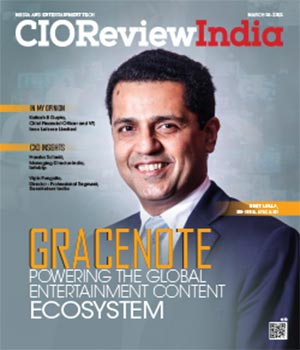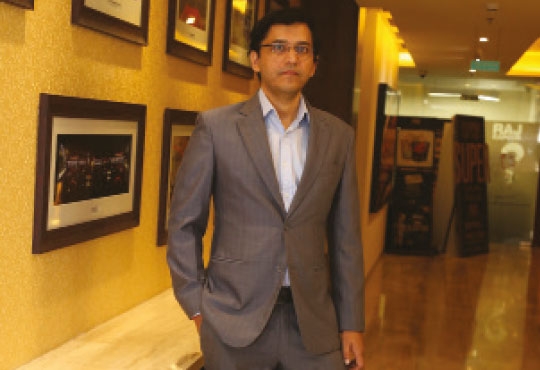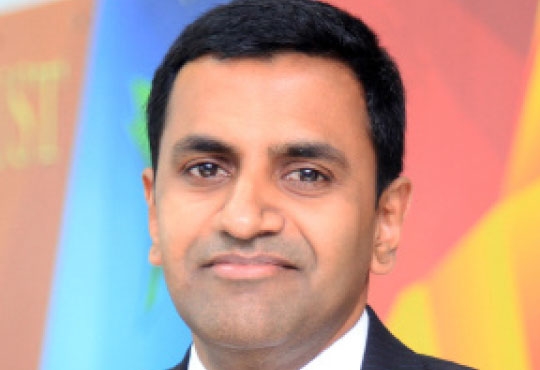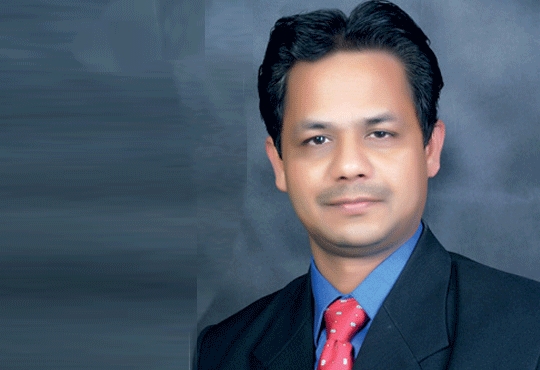
Disruptive Advancements in the Media and Entertainment Industry
Dorairaj Vembu, Senior Product Manager & Evangelist, Automotive, Consumer Electronics and IoT, Sasken Communication Technologies | Wednesday, 08 March 2017, 08:49 IST
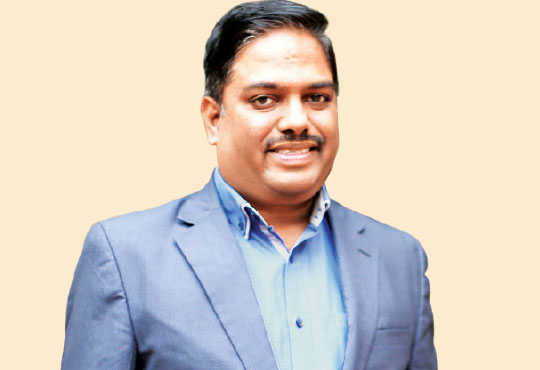 The Indian media and entertainment industry is likely to grow at a Compound Annual Growth Rate (CAGR) of 14.3 percent to reach 2.26 trillion (USD 33.7 billion) by 2020.
The Indian media and entertainment industry is likely to grow at a Compound Annual Growth Rate (CAGR) of 14.3 percent to reach 2.26 trillion (USD 33.7 billion) by 2020.
Given this growth rate, it is imperative that various players in the value chain would want to have a slice of the pie. The growth figures indicate only the media industry and do not include other ecosystem players like manufacturers of various equipment starting from content creation, content distribution, to content playback.
The media and entertainment industry has broadly three players: content creators, distributors, and those who help in the consumption of the content. With the passage of time each of these players has evolved in terms of technology, resulting in churn with respect to the various industry players involved.
Traditionally, content creation was the strong hold of media houses or studios. Content was created using analog technology with stereophonic audio and was stored on celluloid films. But over a period of time, this has moved to digital recording using MPEG-1, MPEG-2 and more recently H.265 High Efficiency Audio Coding. Along with immersive audio experience using multi-channel, surround audio, and High Dynamic Range video, this concoction results in lifelike experiences. It is no longer just the sound but players are increasingly focusing on quality to provide real life experiences.
The movement from analog to digital has resulted in many traditional players exiting the value chain. The new and emerging players have leveraged the increasing computing power of silicon to generate enthralling experiences, newer opportunities for revenue generation.
In the media industry, there is a strong link between the technologies used in the upstream process of content creation and adoption of the same in downstream. For example, the availability of content in a particular media format has led to the explosion in the development of compatible equipment downstream starting from distribution to playback.
The rapid growth of Internet has changed the face of the distribution ecosystem. The process of content distribution that involved huge logistics with significant lead times has seen a sea change through content digitization. Today the content can be instantly distributed to any part of the world through high speed networks. This has seen emergence of new players in the content distribution, cataloguing, and curating space resulting in rapid innovations right from content creation and distribution networks, to end-user devices used for consuming content. Today devices at various price points provide virtual reality, gaming, and high fidelity audio experiences targeting the low, mid and high end of the market.
The revenue generation model for monetization of content has also undergone a sea change. In order to generate revenue, channels used advertisements which were based on broad geographic or demographic reach and not on pointed targets. With the Internet becoming a key medium for content delivery, broadcasters are able to focus on targeted advertisements. There are various analytics providers who provide actionable intelligence to marketers for targeted advertisements based on specific preferences of users at individual level. This helps broadcasters to charge a premium on their ads over traditional broadcast networks.
On the downstream content consumption, there has been an explosion of multi-screen experiences where content is consumed through multiple screens like TVs, tablets, and mobile devices. Today, televisions have become smart through connectivity to the Internet and corresponding social media experiences. The content is adapted to various screen sizes and network bit rates dynamically through Adaptive Bitrate streaming technologies like MPEG-DASH, Apple HLS, and Microsoft Smooth Streaming. The availability of high speed Internet connections has reduced the dependency of the user on changes in traditional broadcast networks which have been slow to adapt technologies like HD/UHD, HDR content. Today, High Dynamic Range content can be delivered through the Internet and experienced on mobile devices/smart TVs.
The traditional domination of Direct to Home (DTH)and Multi-System Operators (MSOs) on user’s screen is also changing with the emergence of telecom operators who are getting into content distribution space and have a direct contact with end user. In the current scenario delivering personalized content is seen as a key differentiator in ensuring customer retention. This is resulting in a race between the operators to lay the high speed network infrastructure for content delivery and strike partnerships with content providers, analytics providers and media houses in order to bring exclusive content to their users.
The future could see DTH operators and MSOs losing their grip and emergence of players who have the capability to deliver personalized media experiences through multi-channel delivery namely satellite, fibre optics, and mobile. It is likely that the latter will have an upper hand in retaining high value customers due to their personalized offerings.
CIO Viewpoint
Technology changing landscape of Media and...
By Kailash B Gupta, Chief Financial Officer and VP, Inox Leisure Limited
How Digital and AI is re-defining customer...
By Rajat Tyagi, CIO & Digital Business Head, PVR
Need of Information Security in Today's World
By Sriram Naganathan, President – IT & Digital Initiatives, Liberty Videocon General Insurance Company
CXO Insights
Post-Pandemic Marketing: Why Omnichannel...
By Harsha Solanki, Managing Director-India, Infobip
The Future Of The Workplace Design And The...
By Vipin Pungalia, Director - Professional Segment, Sennheiser India
Taking Businesses To The Next Level By...


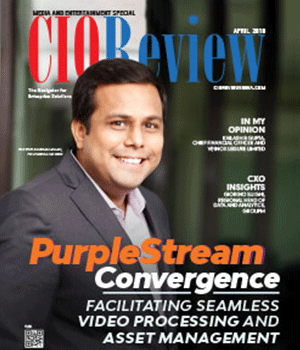
.jpg)
.jpg)
